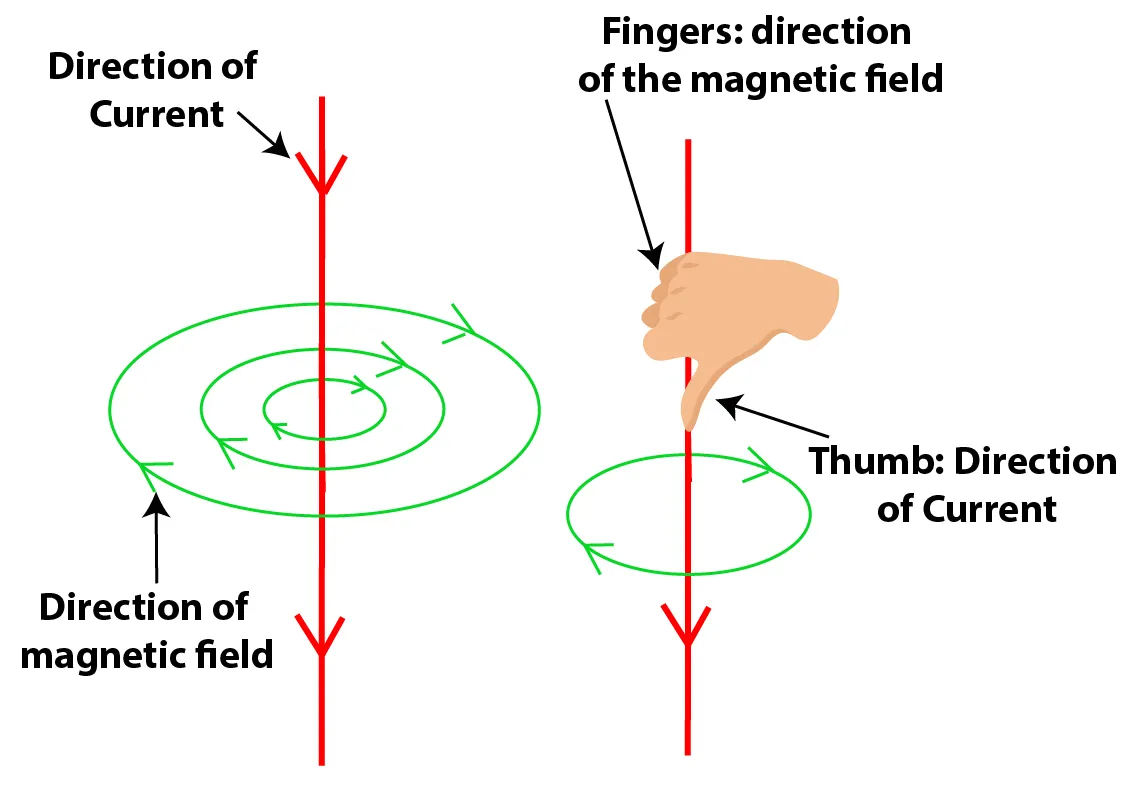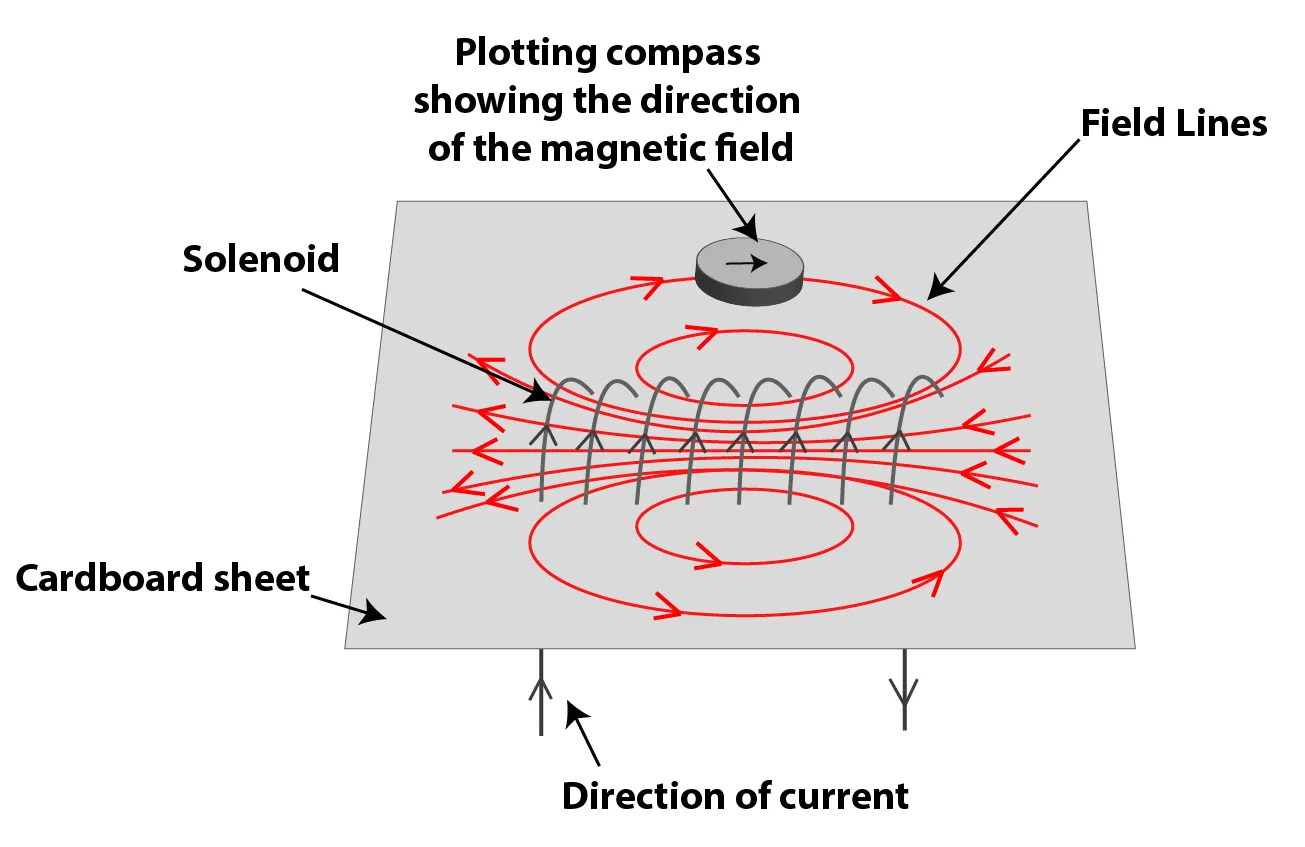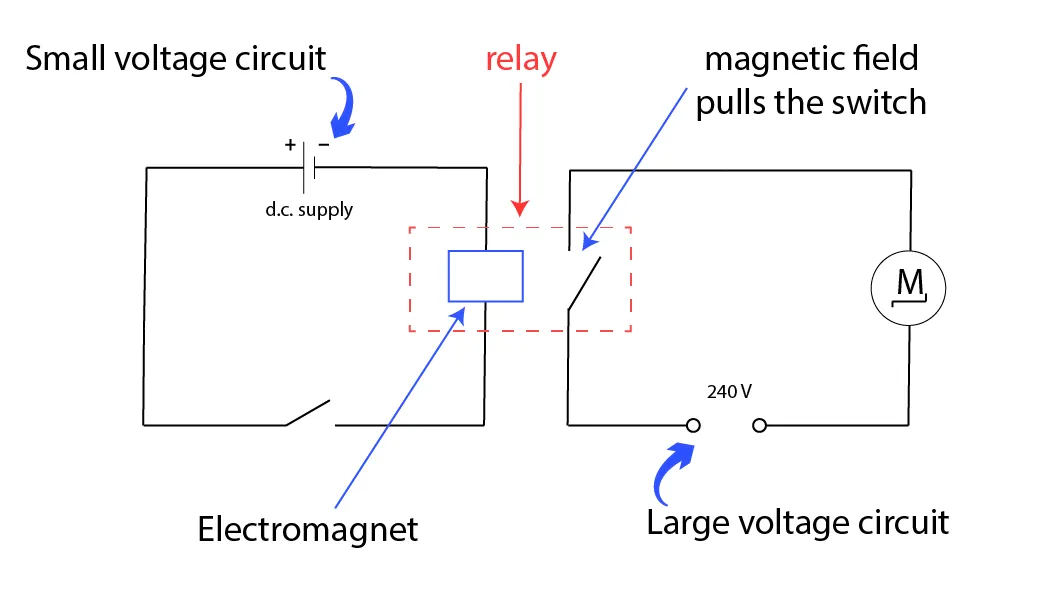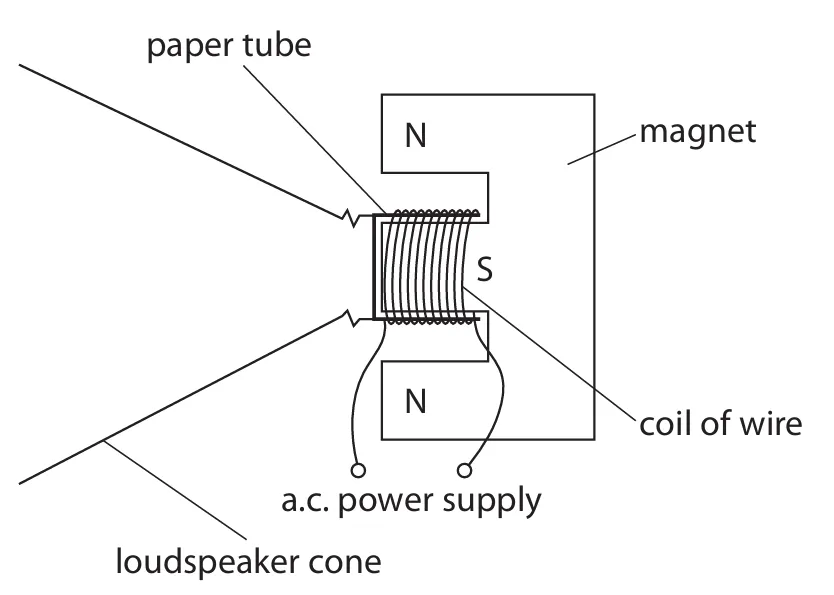4.5 Electromagnetic effects
4.5.3 Magnetic effect of a current
Core Content
1. Magnetic Field Due to Currents in Straight Wires and Solenoids
- A current-carrying conductor produces a magnetic field around it
- For a straight wire, the magnetic field forms concentric circles around the wire
- Use the Right-hand thumb rule:
- Thumb: direction of current
- Fingers: direction of the magnetic field

Figure 1: Right hand thumb rule
- A solenoid (coil of wire) creates a magnetic field like that of a bar magnet
- One end behaves like a north pole, the other like a south pole
- Inside the solenoid, the field lines are strong, uniform, and parallel

Figure 2: Right hand rule for solenoid
2. Experiment to Identify Magnetic Field Pattern
- Use iron filings and a cardboard sheet:
- Place the wire vertically through the sheet
- Turn on current and sprinkle filings – observe concentric circles
- Use a magnetic compass to find direction:
- Place around wire or solenoid and observe compass needle alignment

Figure 3: Field due to a straight wire

Figure 4: Field due to a Solenoid
3. Applications: Relays and Loudspeakers
Relays:
A relay is a device that enables one electric circuit to control another. It is often used when the first circuit carries only a small current (e.g. in an electronic circuit) and the second circuit requires a much higher current.
- Use electromagnets to open/close switches in circuits
- Current in a small circuit can control a larger current in another

Figure 5: Relay
Loudspeakers:
Loudspeaker consists of a circular permanent magnet with a central pole and a ring pole. A coil of wire sits over the ring pole and is attached to a paper cone.
There is an alternating current in the coil. The changing magnetic field in this coil causes it to move up and down, making the cone vibrate and produce a sound.
- Have a coil placed in a magnetic field
- Alternating current causes the coil to vibrate – moves the cone and produces sound
Q1. The diagram shows a simple loudspeaker.

Figure 6: Relay
A coil of wire is wrapped around a paper tube, which is connected to the loudspeaker cone. This coil is placed in a magnetic field created by a permanent magnet. An alternating current (a.c.) flows through the coil.
Explain how the loudspeaker produces a sound wave.
✅ Answer:
When an alternating current (a.c.) flows through the coil, it creates a changing magnetic field around the coil.
This magnetic field interacts with the magnetic field of the permanent magnet, producing a force on the coil.
Because the coil is attached to the cone, the cone moves back and forth as the current changes direction.
This vibration of the cone makes the air particles vibrate, creating a sound wave that travels to our ears.
Supplement Content
4. Variation in Magnetic Field Strength
What happens to the magnetic field strength around wires and solenoids?
- Straight wire:
- The magnetic field is strongest close to the wire
- As you move farther away, the magnetic field becomes weaker
- The field lines form concentric circles that spread out
- Solenoid (a coil of wire):
- The magnetic field is strongest inside the solenoid
- The field is stronger near the ends of the solenoid
- If the solenoid has more turns of wire or higher current, the magnetic field becomes stronger
5. Effect of Changing Current
What happens to the magnetic field if we change the current?
- If you increase the current, the magnetic field becomes stronger
- If you decrease the current, the magnetic field becomes weaker
- If you reverse the direction of the current, the direction of the magnetic field also reverses
Core questions
• The compass needle aligns tangent to the circular field lines
• The direction shows the field orientation (N pole points in field direction)
• Reversing current reverses the compass needle orientation
1. Small current flows through the relay coil
2. Coil becomes an electromagnet
3. Magnetic field attracts the iron armature
4. Armature movement closes the contacts
5. This completes the secondary circuit (with larger current)
Supplement questions
• Field strength follows an inverse relationship with distance
• At double the distance, field strength reduces to about ¼ (inverse square law)
• Field lines become less dense as they spread out
• Increase current: More current → stronger magnetic field
• More turns: Each turn contributes to the field
• Iron core: Iron becomes magnetized, greatly increasing field strength
• Current direction determines magnetic pole orientation
• Reversing current swaps north and south poles
• Field lines now emerge from opposite end
• Can be demonstrated with compass needles around solenoid
• Multiple turns combine their magnetic fields
• Creates a nearly uniform field inside the coil
• Can concentrate field lines through a soft iron core
• More practical for applications needing strong, controlled fields
• Clearly defined north and south poles
